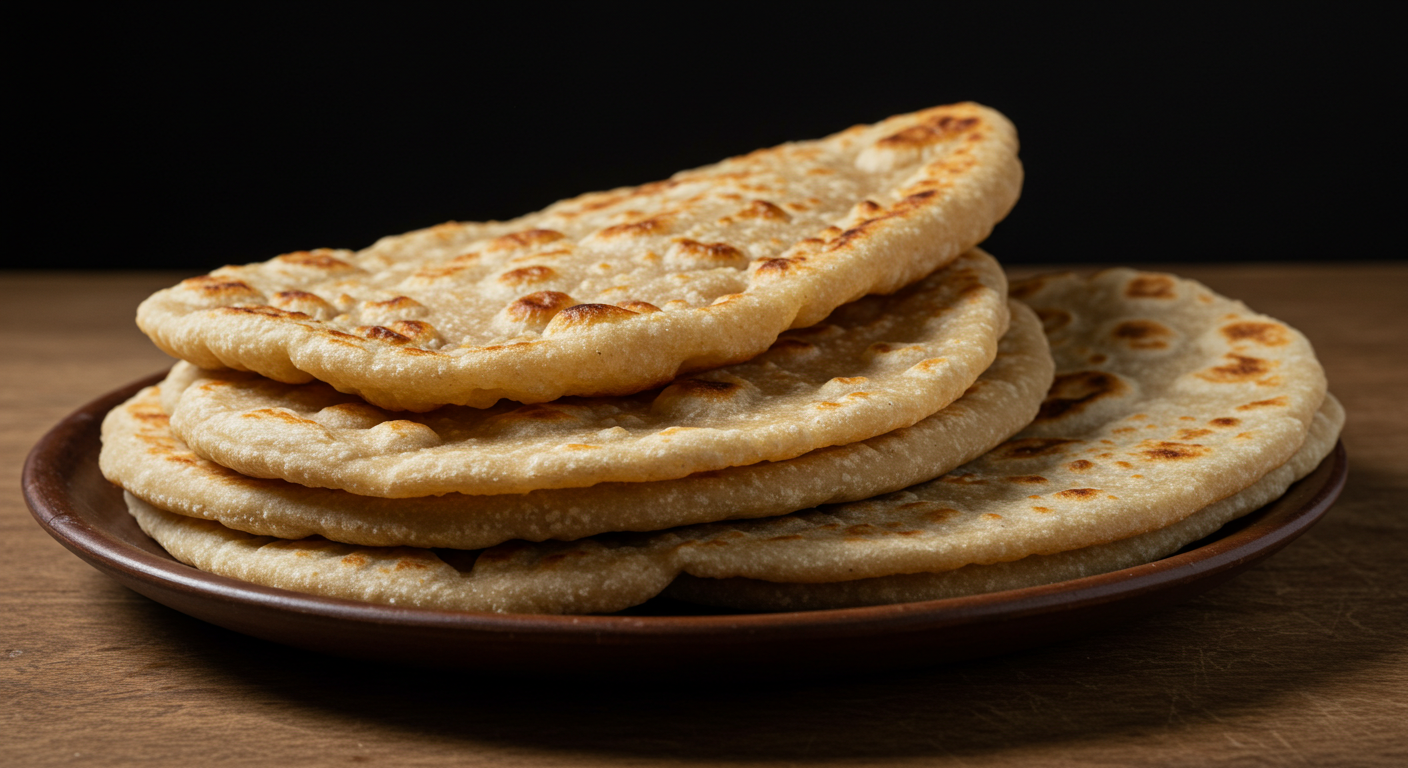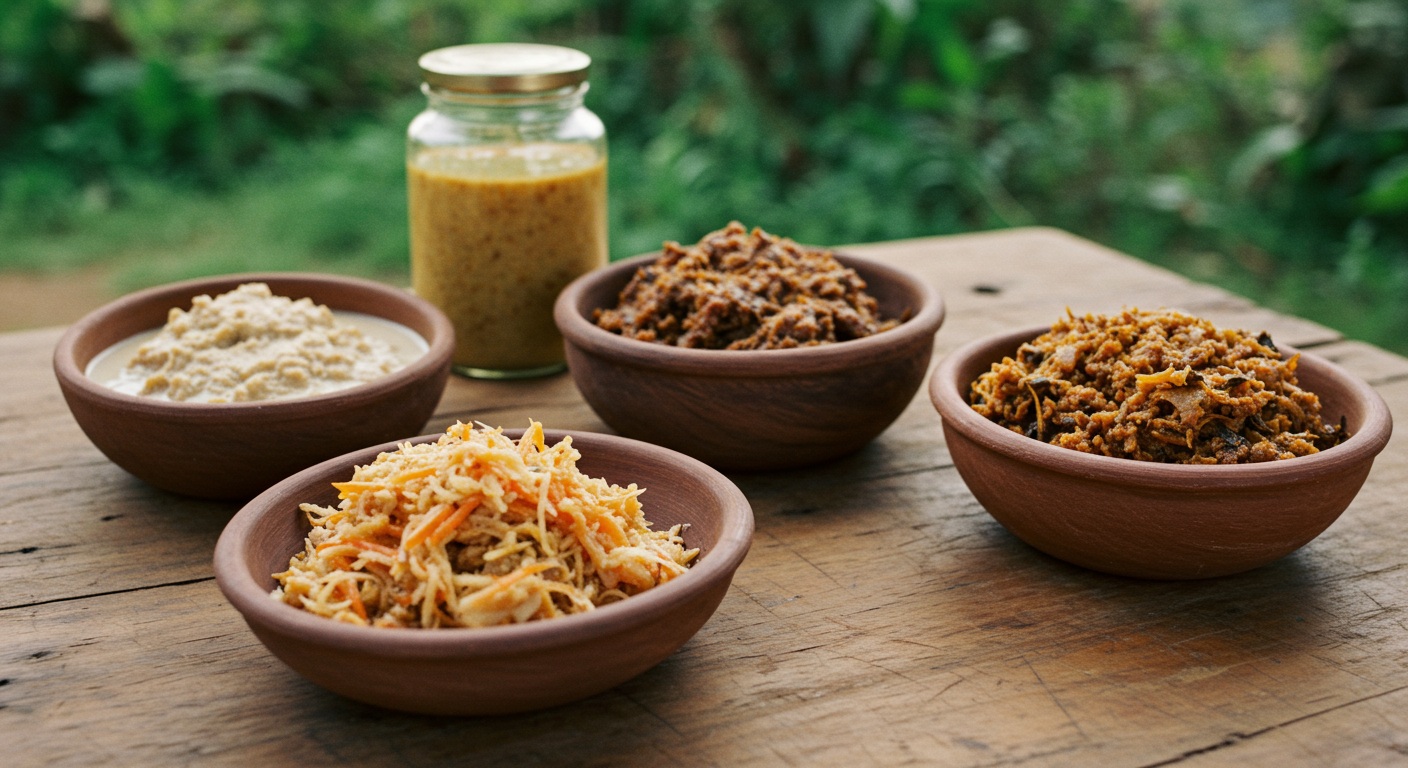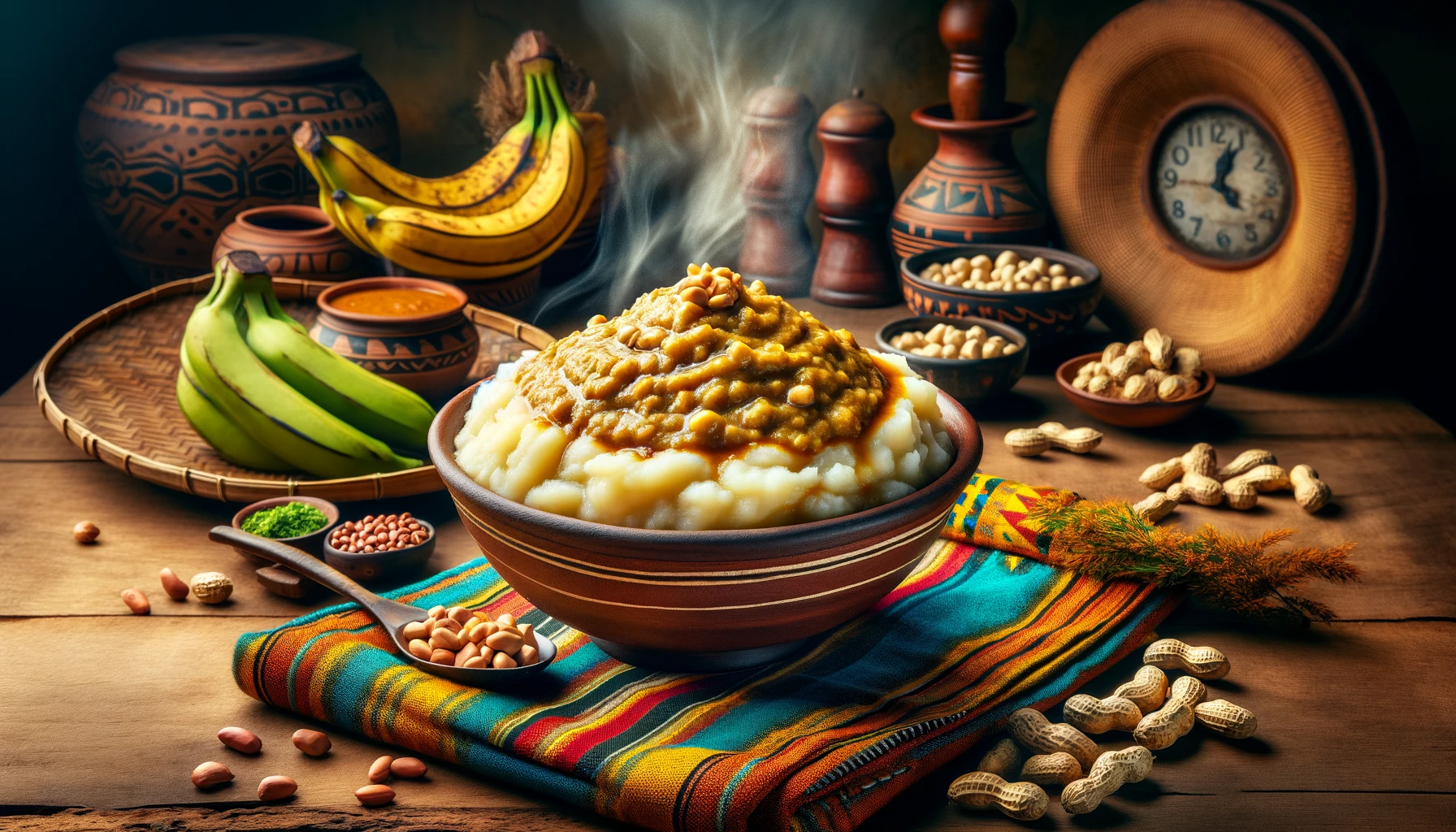East African chapati is soft, layered, and slightly chewy, distinct from its Indian cousin by being richer and often enjoyed on its own or with stews. It's a staple in Uganda and Tanzania, commonly found in street stalls and home kitchens alike.
Ingredients:
3 cups all-purpose flour
1 teaspoon salt
1 tablespoon sugar
3 tablespoons oil or ghee
1 cup warm water (as needed)
Extra flour for dusting
Oil for cooking
Instructions:
In a large bowl, mix flour, salt, and sugar. Add oil and slowly incorporate warm water, kneading until you get a soft, elastic dough (about 8–10 minutes).
Cover and let the dough rest for 30 minutes.
Divide dough into equal balls. Roll each ball into a thin circle, brush with oil, and roll it up like a cigar. Coil it into a spiral and let rest again for 10 minutes to enhance flakiness.
Roll out each spiral into a flat round and cook on a hot pan with a bit of oil until golden brown spots appear on both sides (2–3 minutes per side).
Serving Suggestion:
Serve warm with beans, meat stew, or fried eggs. Also makes a great base for “Rolex”—Ugandan street food with eggs and vegetables rolled inside chapati.






